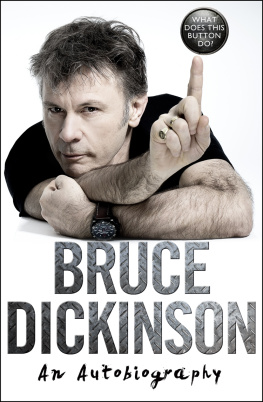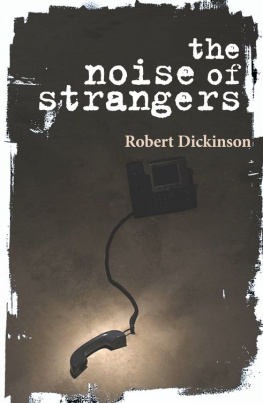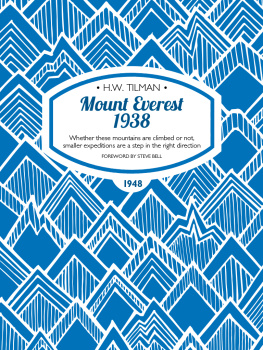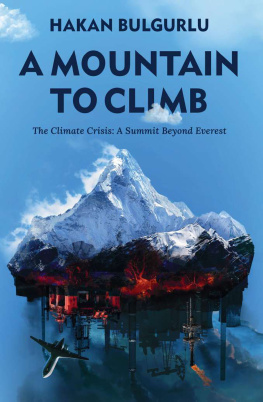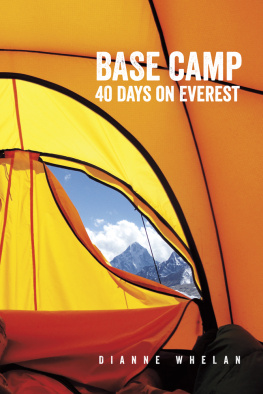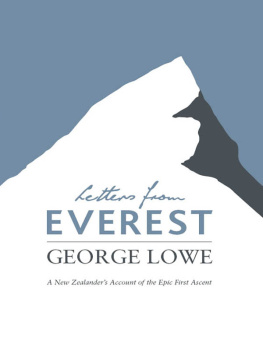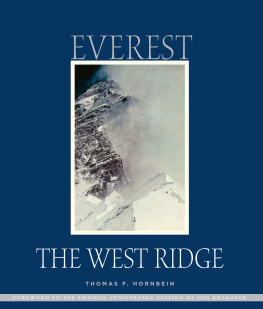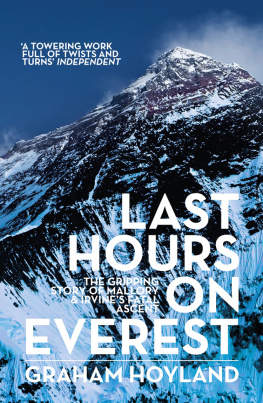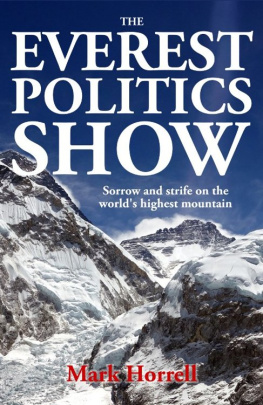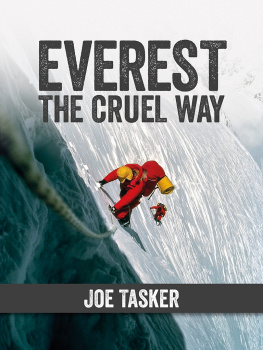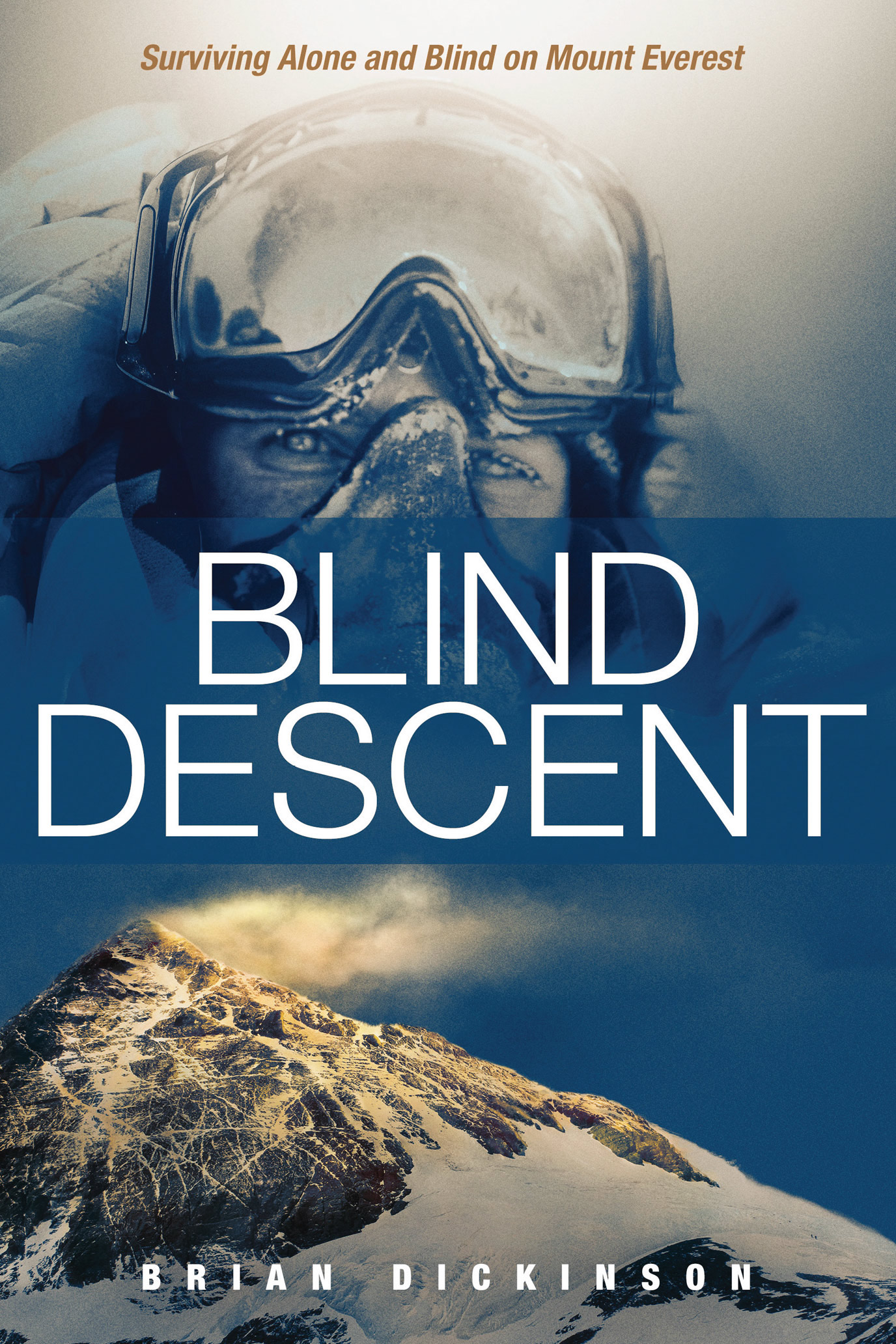Blind Descent is an absolutely gripping, factual narrative of Brian Dickinsons extraordinary experience on Everest. The story of his descent just after losing his eyesight while low on oxygen kept me at the edge of my seat. This book is emotionally charged and so compelling that I found it all but impossible to put down. Blind Descent is a must-read!
DON D. MANN
SEAL Team Six
Who would have thought Mount Everest would now have two blind climbers? But I got the added pleasure of ascending the mountain blind as well. Brians story is a harrowing adventure, a testament to his faith, and well worth the read. I only wish Id known him before his climb so I could have given him some tips on descending by feel.
ERIK WEIHENMAYER
First blind climber to summit Mount Everest
Personal strength, Navy training, and family support got Brian Dickinson to the summit of Mount Everest. Yet when he found himself blind and alone atop the highest point on earth, it was Brians faith that led the way down during his amazing and treacherous blind descent.
JIM DAVIDSON
Climber and coauthor of The Ledge: An Inspirational Story of Friendship and Survival
Visit Tyndale online at www.tyndale.com.
TYNDALE and Tyndales quill logo are registered trademarks of Tyndale House Publishers, Inc.
Blind Descent: Surviving Alone and Blind on Mount Everest
Copyright 2014 by Brian Dickinson. All rights reserved.
Cover and interior photographs copyright Brian Dickinson. All rights reserved.
Designed by Stephen Vosloo
Edited by Stephanie Rische
Published in association with the literary agency WTA Services LLC, Smyrna, TN.
All Scripture quotations, unless otherwise indicated, are taken from the Holy Bible, New International Version, NIV. Copyright 1973, 1978, 1984, 2011 by Biblica, Inc. Used by permission of Zondervan. All rights reserved worldwide. www.zondervan.com.
Scripture quotations marked NLT are taken from the Holy Bible, New Living Translation, copyright 1996, 2004, 2007, 2013 by Tyndale House Foundation. Used by permission of Tyndale House Publishers, Inc., Carol Stream, Illinois 60188. All rights reserved.
Scripture quotations marked NCV are taken from the New Century Version. Copyright 2005 by Thomas Nelson, Inc. Used by permission. All rights reserved.
Some of the names in this book have been changed out of respect for the privacy of the individuals mentioned.
ISBN 978-1-4143-9862-4 ITPE edition
Library of Congress Cataloging-in-Publication Data
Dickinson, Brian.
Blind descent : surviving alone and blind on Mount Everest / Brian Dickinson.
pages cm
ISBN 978-1-4143-9170-0 (hc)
1. Dickinson, Brian. 2. Mountaineers--United States--Biography. 3. Mountaineering--Everest, Mount (China and Nepal) 4. Snowblindness. I. Title.
GV199.92.D52A3 2014
796.522092--dc23
[B] 2013050916
ISBN 978-1-4143-9576-0 (ePub); ISBN 978-1-4143-9171-7 (Kindle); ISBN 978-1-4143-9577-7 (Apple)
Build: 2015-07-01 14:06:57
Id like to dedicate this book to my wife, JoAnna, and my children, Emily and Jordan, who make life worth living. I couldnt ask for a more supportive and loving family.
Prologue
March 30, 2011
Snoqualmie, Washington
THE SKY was a menacing gunmetal gray, with dark storm clouds flowing in and casting an ominous shadow over the snowcapped peaks in the distance. This would have made for horrible climbing conditions, but it was an eerily fitting backdrop for what I was about to do.
The house was blanketed in silence. My wife, JoAnna, was at work, and our kids were both in school. Id spent the past several weeks cramming in as much family time as possible, playing endless hours of LEGOs with Emily, who had just turned seven, and Jordan, who was four. Now it was finally time. Id checked everything off my to-do list, and I had the house to myself. It was a moment Id been thinking about and dreading for months.
In a matter of days, I would set off on my two-month expedition to Mount Everest. It wasnt the climbing that had me anxious it was the thought of being away from my family for so long. When it came to the climb itself, I wasnt worried. I was in the best shape of my life, and I had planned everything down to the last detail. But I was also aware of the reality that people do die on Everest. No matter how well prepared you are, there are always things that are out of your control extreme weather, shifting icefalls, avalanches, cerebral edema. Lets face it, theres a reason they call the top of Mount Everest the death zone.
As the winds picked up and rain began pelting my office window, I cast one last glance at the darkened face of Mount Si, which was slowly disappearing into the Washington mist. Then I sat down at my desk and powered up my MacBook. After Id centered myself in the video frame, I took a deep breath and hit Record. I could already feel the tears burning behind my eyes.
Hello, JoAnna, I began, a sob catching in my throat. If youre watching this, something must have gone terribly wrong, and Im in heaven now, watching you.
CHAPTER 1
EXPEDITION OF A LIFETIME
I know the plans I have for you, declares the L ORD , plans to prosper you and not to harm you, plans to give you hope and a future.
JEREMIAH 29:11
GROWING UP in the small town of Rogue River, Oregon, I never imagined that one day I would be planning a Mount Everest expedition. My family and I lived in the shadow of the Siskiyou Mountains, and Id heard plenty of news reports about mountaineering disasters especially the ones that occurred on the highest peak in the world. I was just a kid in the 1980s, when more climbers began ascending above 26,000 feet on Everest. That translated to more fatalities and more media coverage. Between 1980 and 2002, 91 climbers died during their attempt to summit.
In 1982 alone, tragedy struck expeditions from four different countries. British climbers Peter Boardman and Joe Tasker disappeared while attempting to be the first to climb the northeast ridge. Then a Canadian expedition lost their
And then, more than a decade later, disaster struck again when eight people were caught in a blizzard and died on Everest. Over the course of the 1996 season, 15 people died trying to reach the summit, making it Everests deadliest year in history.
As a child and a young adult, I was gripped by those stories, but it seemed insane to me that mountaineers would climb in such arctic and oxygen-deprived conditions. Why would people want to risk plummeting to their death or losing body parts to frostbite? Like most people, I was a victim of the media. Although only 2 to 3 percent of those who attempted to summit Everest lost their lives, the news seemed to report only the fatalities. Everest seemed like an impossible death trap that only a few elite individuals could conquer. And even then, theyd remain permanently damaged physically or mentally as a result of the experience.
But while I may not have had visions of climbing the tallest peak in the world one day, I was a very daring kid. I started participating in extreme sports as soon as I was old enough to venture out without supervision. Now that Im a parent myself, I realize how much stress I put my parents through especially my mom. My schedule was packed with organized sports like soccer, baseball, track, golf, and tennis. In between I rode my single-gear bike everywhere. On any given day in the summer, I would ride 10 miles away to the Rock Point Bridge, where Id leave my bike in the ditch on the side of the road and jump off the 60-foot bridge into the mighty Rogue River.



